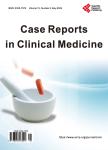Anterior Choroidal Artery Territory Stroke in Young Patient
Anterior Choroidal Artery Territory Stroke in Young Patient作者机构:Internal Medicine Service Hospital Pedro Hispano Matosinhos Portugal Neurology Service Hospital Santos Silva Vila Nova de Gaia Portugal
出 版 物:《Case Reports in Clinical Medicine》 (临床医学病理报告(英文))
年 卷 期:2014年第3卷第8期
页 面:500-502页
学科分类:1002[医学-临床医学] 100214[医学-肿瘤学] 10[医学]
主 题:Anterior Choroidal Artery Stroke Dissection Young Patient
摘 要:Introduction: Stroke incidence in young patients is about 10 cases in 100.000, according to several European studies. In this age group arterial dissection is one of the main pathological mechanisms involved. The internal carotid’s artery (ICA) main supraclinoid branch is the anterior choroidal artery (AChA). The occurrence of infarction in its territory due to internal carotid dissection is considered to be a rare event and may have different clinical presentations due to anatomical variability. Clinical case: A 31-year-old male patient, without any known cardiovascular risk factors or chronic medication, presented with acute onset of stabbing right sided headache while practicing football. Visual disturbances and hemiparesis with hypesthesia of his left arm were also mentioned. On admission left homonymous hemianopsia, left hemiparesis and left extensor plantar reflex were present. Brain magnetic resonance showed hyperintensity of T2 and FLAIR signals and restricted diffusion pattern suggested acute/subacute infarctions in the thalamic and subcapsular area, corpus callosum, splenium and subcortical parietal right region. Magnetic resonance angiography (MRA) of the brain showed reduction of the right ICA’s caliber, mainly of its supraclinoid segment in which a marked irregular stenosis was visualized, suggestive of arterial dissection. This stenotic segment included the origin of the AChA and of the posterior communicating cerebral artery with an exchange in their territories. Lumbar puncture results were normal as were analytical investigations which included CBC, sedimentation rate, syphilis serology and immunologic and prothrombotic screen. There were no phenotype characteristics suggestive of connective tissue disease. Conclusion: Trauma seems to be the most probable lesion mechanism for the occurrence of intracranial carotid’s dissection in this particular case, as the patient was practicing vigorous sports at time of onset. In view of great anatomic variabili



